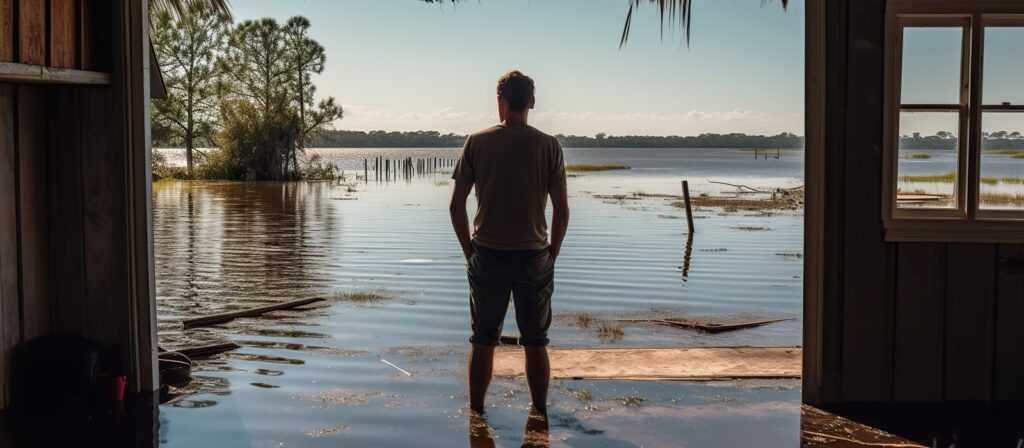Climate change presents an unprecedented challenge for business, insurers and governments, making the task of adapting and building resilience appear insurmountable. But the tools already exist — what’s needed is to integrate them into a joined-up strategy.
The terms climate resilience and climate adaptation are often used interchangeably. But while these two concepts are closely related, they're distinct. Building resilience and adapting to climate change are two sides of the same coin. It's critical to understand their separate roles and the way in which the two concepts support each other.
Climate resilience refers to the capacity for a community, a business or an economy to bounce back from the impact of a climate-related event. It includes insurance solutions that transfer risk and help finance rebuilding.
Adaptation, meanwhile, is about the investment, both public and private, needed to reduce the risk of climate-related costs arising, as well as to create the new conditions for sustainable growth in an altered environment.
The two concepts, though different, are inextricably intertwined. Without financial resilience, including through insurance, investment risk increases, and the costs and availability of private capital required to meet the scale of investments at stake will be impacted. Without adaptation, the cost of insurance amid increasing climate risk becomes ever greater. Genuine and lasting financial sustainability requires both.
Climate change is already having real effects on (re)insurers’ business models. Some companies are pulling back from high-risk areas in the US, due to increased risks of flood and wildfire, a recent US Senate Budget Committee meeting heard.1 The situation is particularly acute in areas such as Florida, Louisiana and California.
Governments and insurers need an integrated toolkit that helps them build resilience and adapt to climate change — and to do so in a way that's sustainable for both the economy and the private sector.
Tools for the tasks
Climate change is a multidimensional threat. It's a macroeconomic issue, threatening growth and prosperity, but it's also a threat on the micro level to individuals, sectors, companies and communities. It presents both national and local challenges, and so requires responses at both levels.
Climate risks also have a time dimension; they may take the form of an acute catastrophe or a long-term erosion of a particular economic activity.
Across these dimensions of time and geography is a network of channels that transmit climate shock, often poorly understood or mapped, that can propagate risk and loss through an economy from one sector or region to another. A long duration flooding event, for example, can eventually lead to power outages, transportation disruption or, ultimately, homeowners defaulting on their mortgages and businesses going bankrupt.
Each organization has different strengths and weaknesses that can be applied to this challenge.
Governments and central banks have the tools to address macroeconomic issues. However, they're not well equipped to address granular threats to a particular geographical location or sector.
Meanwhile, the insurance industry has historically been far better at understanding and pricing the risks to locations, sectors or communities. But inevitably, it's more focused on short-term time horizons.
These approaches need to be combined.

The article is reproduced with the kind permission of ICMIF Supporting Member Gallagher Re. For more information click here.
Published February 2024
Balancing resilience and adaptation
The channeling of capital and funds into resilience and adaptation must be joined up, and it requires balance and integration.
As an example, climate change and increased drought risk threaten the agricultural sector in most countries. This risk may be addressed in two basic ways: by strengthening resilience with national crop insurance schemes (which wouldn't reduce the risk, but would improve resilience through risk diversification and transfer) or through transformational investments into irrigation infrastructure, for instance.
But the best solution may actually be found in combining both approaches, which offer mutually enhancing benefits. For example, insurance premiums could be lowered if the policy accounts for the adaptations underway. At the same time, the cost of capital and risk appetite from the private sector for adaptation investments could be significantly improved if resilience, in the form of de-risking solutions such as insurance and financial guarantees, is in place.
Piecemeal solutions are unlikely to solve the challenges at national level. Financing strengthened resilience through insurance premiums while subsidizing adaptation for the same risk needs to be fully coordinated and integrated into a cost-efficient strategy.
This strategy requires efficient allocation of funds or capital. Risk frameworks and cost-benefit analysis need to be foundational to national plans for resilience and adaptation. Governments, communities and the private sector need to be joint stakeholders in these holistic risk management strategies that look to protect multiple assets, liabilities and livelihoods from a wide range of risks and events over short- and long-term time horizons.
The allocation of funds and the incentives on all sides needs to be coordinated to create an ecosystem with strong alignment of interest between all parties involved.
Public subsidies for insurance in high-risk areas and public investment in adaptation projects may be jointly required, for instance, alongside a clear role for the private sector and quantified benefits for communities, businesses and resilience overall.
Crucially, the insurance sector must adapt its approach and start to take a longer-term view. Carriers and their broker partners need to see their role not simply as providers of short-term cover, but as part of transformational public-private partnerships over many years, which have the potential to make even better use of their expertise and capital and unlock new business opportunities.
The tools for building financial resilience and adapting to climate change already exist, but they're spread across several industries, public and private sector stakeholders and time horizons. And a critical solution to climate change may be to just bring these tools together into a single, fully integrated approach to best address the scale of the challenge we are facing.
Gallagher Re’s Public Sector and Climate Resilience Solutions practice is dedicated to strengthening the resilience of public and corporate clients against the financial impacts of climate and disaster risks. To craft products customized for clients’ needs, the Public Sector and Climate Resilience Solutions practice uses analytics from our Climate and ESG, Catastrophe Analytics, Strategic & Financial Analytics and InsurTech teams, along with support from the Gallagher Research Centre and its extensive network of partners.
Our holistic approach emphasizes:
- Financial preparedness
- Climate resilience and de-risking strategies
- Public private partnerships and risk pools
- Established and innovative risk financing instruments, including parametric risk transfer solutions
The combined knowledge and global presence of the team’s brokers, modelers and actuaries allow the team to advise clients from the private and public sectors, both in developed countries and emerging economies all around the world.
For more information, see Gallagher Re’s Public Sector and Climate Resilience Solutions.
Sources
1. Frank, Thomas. "Climate Change Is Destabilizing Insurance Industry," Scientific American, 23 Mar 2023.





